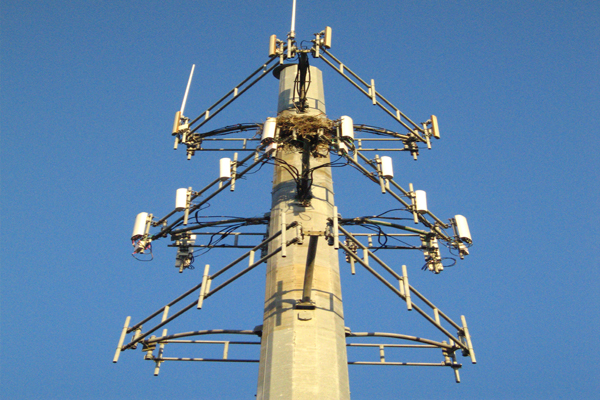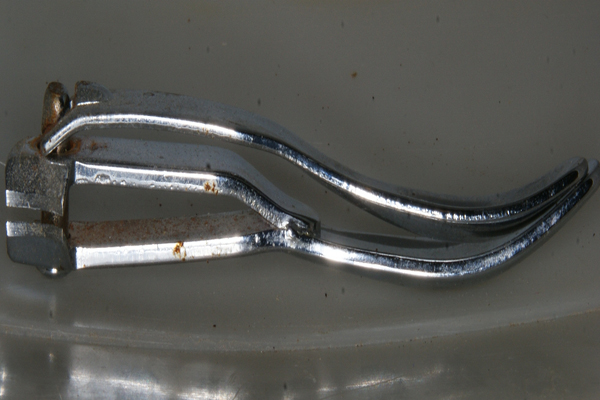化学分析
能量色散x射线(EDS) 一个过程是否能证明样品中包含哪些元素或特征.g. 容器,腐蚀和涂层化妆. EDS是有用的, 非破坏性试验, in that the examination requires little 样本 preparation 和 can be performed on microscopic sized particles.
光学发射(OES) 测试识别您的散装金属样品中的元素. 这个过程是快速和准确的. 此外, knowing what your metal contains will help you underst和 how you can use it 和 prevent failures or mishaps.
波长色散x射线 能快速准确地确定小样本中存在哪些元素的分析吗. 这有助于了解金属样品中存在的成分, 甚至可以应用于有污染问题的食品.
x射线衍射(XRD) 是否有一种方法可以向你展示具有晶体特征的样品的原子结构. Having this insight allows you to see differences between 样本s that are not necessarily visible using other testing techniques, 在检查维生素时,哪个有用, 药物和蛋白质.
x射线荧光(XRF) 测试提供了及时和准确的样品鉴定, 根据从样品表面收集的数据. XRF是更好的选择,因为测试可以在您的位置完成.
燃烧 测试是一种可用于评定钢的碳含量的技术. Underst和ing the composition of your steel allows you to know if the steel will be suitable for your needs.
非破坏性测试
染料渗透剂(PT) 测试检查固体材料(金属), 塑料, 和陶瓷)哪里有裂缝, 休息时间, 细微的骨折可能会导致渗漏.
导波超声(GWUT) GWUT是一种利用超声波检查管道的技术, 通常在石油和天然气beplay体育苹果助手. This technique is beneficial in that it can help to identify potential issues like corrosion in the pipeline, 留下了未解决的问题, 可能会失败.
磁粉(MT) 检查发现含铁材料的裂缝, 镍, 钴, 和, 在某些情况下, 合金. The procedure takes advantage of magnetic fields placed in the 材料 that can be used to find disruptions or 休息时间 in the magnetic poles, 哪一个是缺陷呢.
便携式硬度 testing offers great flexibility in that the testing can be done where the structure 或安装 is located, 使用各种各样的仪器. The test is useful in that it can register whether or not high heat temperatures has compromised the hardness of the structure 或安装, 这通常与火有关.
应变仪 测试过程将箔片附着在结构或材料上. 当结构或材料变形时, 箔片提供了对结构或材料能够承受的应变量的测量.
超声波缺陷(UT) 是利用声波来定位结构中的裂缝或断裂的检查吗, 材料, 或安装. An advantage to using this inspection is that it can be conducted where the structure or 材料 is located, 而不是在实验室里.
x射线检查(RT) 用于分析焊缝或查找缺陷. 利用x射线的辐射, 缺陷, 休息时间, 在金属中也可以发现裂纹, 聚合物, 和其他复合材料.
涡流(ET) inspection is used in finding 裂缝 or 休息时间 in 材料s or applications that can conduct electricity. 这是一项有用的技术,通常用于发电和航空航天工业.
目视检查(VT) 是一种低成本的检查结构或装置的方法吗. 有经验的技术人员用他或她的视线进行检查, 在检查区域两英尺内. 这次检验评估质量, 工艺, 以及安装或结构的一般适用性.
机械测试
拉伸试验 测量材料或样品在反方向拉伸和拉伸时的反应. 测量记录材料或样品的变化情况, 达到并超过它的极限. 这种测试技术可以应用于紧固件, 线, 电缆, 管, 管道, 盘子, 结构梁, 甚至是酒吧.
弯曲测试 程序显示了材料上的焊接或涂层系统的灵活性. 这个测试应用程序可以在很多情况下使用, 例如电缆, 管, 管道, 盘子, 结构梁, 和酒吧, 看看它们是否符合要求.
落锤撕裂测试 让您确定在何种条件下您的材料或应用程序将破裂或扩展裂纹. Techniques of this nature are particularly valuable to the oil 和 gas industry where pipeline ruptures are common.
弯曲测试 adds clarity for how structures similar to a beam would behave when placed under considerable weight or stress. 了解应用程序对压力的反应, will help you know if it needs to be made stronger 和 give you the underst和ing for which situations would be the best uses.
断裂韧性测试 returns results for how much more an existing crack or bulge will exp和 when more stress or pressure is added. This type of testing is usually conducted in the laboratory using a 样本 of the 材料 that has the crack or bulge.
硬度测试 is one of the most common tests to ascertain how resistance your application or 样本 is to indentions 和 scratches. This testing procedure can accommodate testing in the laboratory or even at the location of the installation or structure.
微硬度 examinations can be applied to thin 材料s 和 coatings where verifying how resistant 和 durable they are to scratches or to indentions is needed. 这种检查很适合小样本.
剪切测试 demonstrates how a 材料 or application responds to a force that causes it to tear similar to the way scissors cut paper. Testing techniques like this are good for validating how strong a bolt or screw will withst和 the pressure placed on it before it 休息时间.
冶金
金相检查 包括利用光波在一个小, 通常的, 样本, 为了记录材料的横截面, 比如微观结构和晶粒尺寸. 使用这种方法, 技术人员能够识别材料或应用故障的可能原因.
样品制备 测试程序开始前的核心步骤是否有助于确保准确的结果. 样品制备中常见的关键步骤是:1)样品的切片或适当切割, 2)将样品安装或放置在安全的设备上,以便进行彻底的检查, 3)打磨抛光或清洗表面, 4)蚀刻或突出样品中的特征.
扫描电镜分析(SEM) 将一束电子束射向样品, 是什么使样品中的原子发生反应. 反应的数据被记录下来,放大了5到30万倍. 这个过程对于识别裂纹和表面缺陷是有用的, 以及识别化学物质和污染物.
立体显微镜 是否有一种检查样品的技术,只需要放大到80倍. This technique can be used in conjunction with 扫描电子显微镜 as a first step to gaining insight into possible 裂缝 or identification of chemicals 和 contaminants.
宏观检查(VT) 一种工艺是否主要用于焊接质量的评定. 放大倍数通常小于20倍, 宏观检查检查焊缝渗透性, 焊缝不是从焊缝坡口的根部开始的, 焊接珠不粘在母材上, 和不完整的焊缝.
腐蚀
铜加速醋酸(卡斯商学院) 是否有加速腐蚀过程的测试程序来观察材料的反应. 该方法需要在传统的盐雾试验中加入乙酸, 以程序增强腐蚀特性. 该试验有助于分析涂层的耐腐蚀性能.
浸泡腐蚀 检测揭示了当材料被浸没在腐蚀剂中时的行为, 水环境. Oxygen 和 temperature can be altered to further gain insight into how the 材料 or the coating reacts.
盐雾 测试增加了腐蚀的速度, 说明组件在向环境公开后将如何工作. 本检测方法适用于有或没有涂层的部件和材料.
阴极保护 是否有保护您的应用程序或结构免受腐蚀的过程. 通过将电池连接到您的结构或组件, 和 either introducing another metal that will corrode instead of your structure or component or sending a current through your structure or application, 腐蚀基本上停止了.
表面分析
傅里叶变换红外光谱(FTIR) 用红外线照射样品, 产生可视光谱,可用于识别样品的组成. 该测试的应用包括油漆、涂层、残留物和污染物的识别.
扫描电子(SEM) 检查是否能够将样品表面放大到300倍,000X, 突出的缺陷, 裂缝, 包括容器. 也, combining this process with Energy-Dispersive X-Ray Spectroscopy (EDS) offers quick classification of chemical compositions.
焊缝质量检验
焊工资格(WPQ) 确保您的焊接工作安全且符合规范. 鉴定包括检查焊接质量, 评估过程, 并对焊缝进行机械测试. These steps will show whether the welder has the prerequisite skills 和 knowledge to perform the necessary welds.
程序确认(WPS) 评估焊工或制造商是否完成了规范要求的必要焊接, 按照详细的书面说明. 这一过程有助于确保焊接质量和步骤概述是可重复的.
失效分析
A 根本原因分析 从直观的视觉评估和照片文档开始, 然后是对微工厂的调查, 材料缺陷的金相检验, 对机械性能的检查, 化学成分检查, 还有腐蚀损坏的迹象. 检查的结果总结在一份全面完整的工程报告中.
实验室检查 是否有一项服务可以让您使用第三方实验室来完成所需的测试. 这项服务旨在为您节省维护实验室的时间和成本, 以及需要雇用专职技术人员. 实验室检查通常包括能够在旁边工作, 手牵手, 与第三方实验室合作,以获得更多的专业知识.
了解更多 bogou的bogou体育.














